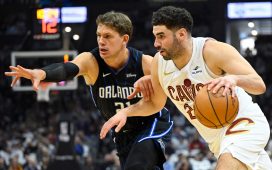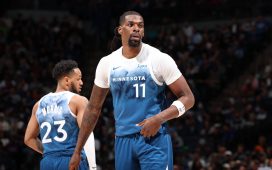Jerry Sloan, who entered the National Basketball Association as an unlikely prospect for a Hall of Fame career but carved out one nevertheless, as an All-Star guard with the Chicago Bulls and one of the winningest coaches in league history, died on Friday at his home in Salt Lake City. He was 78.
The Utah Jazz, a team he coached for 23 seasons, announced the death on their website without specifying the cause. The Bulls had announced in 2015 that Sloan was found to have Lewy body dementia and Parkinson’s disease.
Sloan had a low profile when he arrived in the N.B.A. in 1965. He had played for a small-college N.C.A.A. school, and, though he was tenacious on defense, he wasn’t a brilliant scorer.
But he became a member of the Basketball Hall of Fame after forging an N.B.A. career spanning a half-century. He became the fourth-winningest head coach in N.B.A. history and No. 2, behind Gregg Popovich of the San Antonio Spurs, for longest tenure with one team.
Only Don Nelson, Lenny Wilkens and Popovich have compiled more regular-season N.B.A. coaching victories than Sloan, whose teams won 1,221 games and lost 803 in his 26 seasons, three with the Bulls before he became head coach of the Jazz.
Sloan coached the Jazz to 15 consecutive playoff appearances, from 1989 to 2003, with teams featuring Karl Malone at power forward and John Stockton at point guard in his pick-and-roll offense. His Utah teams reached the N.B.A. finals in 1997 and 1998 but were beaten both times by Michael Jordan’s Bulls.
Sloan was inducted into the Hall of Fame in Springfield, Mass., together with Stockton, in 2009. Malone joined them there in 2010.
The 6-foot-5 Sloan was selected by the Baltimore Bullets in the first round of the 1965 N.B.A. draft out of Evansville College of Indiana (now the University of Evansville), which he led to the 1964 and 1965 tournament championships in the N.C.A.A. small-college division, now known as Division II. He averaged 17.6 points per game as a senior but was coveted mostly for his defensive skills.
After Sloan’s rookie season, the Bulls obtained him in the 1966 draft that stocked their inaugural team. Playing 10 seasons for Chicago, he was a two-time All-Star and was selected six times as an all-N.B.A. defensive player.
Sloan suffered a string of knee injuries and retired as a player after the 1975-76 season. He averaged 14 points a game for his career.
He was offered the head coaching post at Evansville early in 1977 and agreed to take it, but he changed his mind a few days later, feeling that his future lay in the pro game.
He was working as an assistant coach with the Bulls that December when a plane carrying the Evansville basketball team, head coach Bobby Watson and his staff crashed on takeoff from the Evansville airport en route to a game in Tennessee, killing everyone aboard.
“I had just talked to the team the week before,” Sloan told Sports Illustrated in 1997. “It made me realize that basketball wasn’t everything in life.”
Sloan became the Bulls’ head coach in the 1979-80 season. He took them to the playoffs in his second season in Chicago but was fired during his third season, having compiled an overall record of 94 victories and 121 losses.
After serving as an assistant coach with the Jazz, he became head coach in December 1988, replacing Frank Layden, who moved up to team president.
On the sidelines Sloan was by turns unassuming and intense, collecting his share of technical fouls but commanding loyalty from his players.
“The game is extremely important to him, how it looks, how it’s played,” Stockton told The New York Times in 2000. “I think he gets technicals because he’s standing up for the game more than anything else. I think it’s his non-self-promoting demeanor. He’s not out there telling you what a great coach he is.”
Malone, also in a Times interview, said: “He wants you to come, work hard, do what he tells you to do. I won’t play for another coach. Me and him clash every now and then, but it’s one of those things in the end where I want what he wants. — to win. And he realizes that.”
Gerald Eugene Sloan was born on March 28, 1942, in McLeansboro, Ill., near a rural area called Gobblers Knob, where his family had a farm. He was the youngest of 10 children. His father died when he was 4, and he joined with his brothers and sisters in helping their mother with the chores.
Sloan was an all-state basketball player at McLeansboro High School, then played for three seasons at Evansville and became a second-team All-American.
Through his years in the pros, he retained touches of his upbringing as a farm boy. He liked to wear John Deere caps, and he collected and restored tractors.
Sloan had only one losing team in his 23 seasons as the Jazz coach and posted an overall regular-season record of 1,127-682 with Utah.
He resigned in February 2011, at least in part because of his contentious relationship with his star guard Deron Williams, who wanted more freedom to create plays. Soon afterward, Williams was traded to the New Jersey Nets.
But Sloan’s tenure with the Jazz wasn’t over. He returned to the team as an adviser and scouting consultant in 2013.
His first wife, Bobbye Sloan, died in 2004. He had three children with her — a son, Brian, and two daughters, Holly Parish and Kathy Wood. He also had a stepson from his second marriage, to Tammy Jessop. Complete information on survivors was not immediately available.
When Stockton and Malone neared the end of their careers, Sloan acknowledged that he would be disappointed to miss out on an N.B.A. championship.
“I know this, though,” he told Sports Illustrated in 2002. “A lot of guys will show their rings to you who didn’t have anything to do with winning a championship. There’s something to be said for coming back after you lose, for putting yourself on the line, for having the will to try it again and again, for putting every ounce of energy into achieving something after you’ve fallen short.
“That’s the kind of guys we’ve always had here.”








